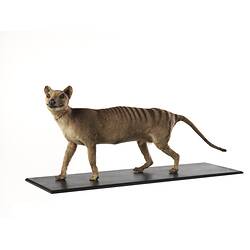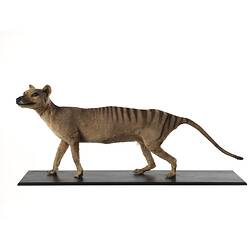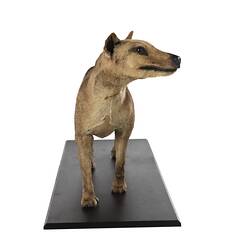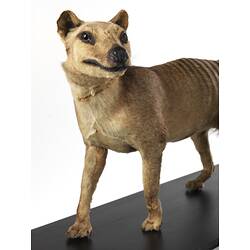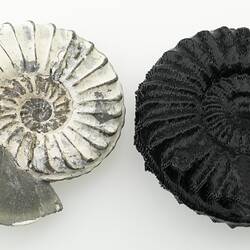Summary
The Thylacine is often known as the Tasmanian Tiger because of the distinctive stripes across its lower back. Despite the common name, it is not closely related to tigers, being a marsupial with a pouch. While little is known about their behaviour, as most observations were made of captive specimens, they appear to have behaved much like a wild dog.
Once widespread across Australia and New Guinea, the Thylacine became extinct in the twentieth century. It disappeared from mainland Australia prior to the arrival of Europeans, possibly due to competition with dingos after they arrived in Australia and hunting by humans. The species survived in Tasmania until the 1930s. Their final extinction in the wild was caused by many contributing factors, including habitat destruction through the establishment of farms, being hunted for bounties as they were believed to be a pest attacking sheep and poultry, and disease.
The last captive specimen died at Hobart Zoo on 7 September 1936. Ironically, the Tasmanian government had introduced official protection for the species just two months previously.
In 2017 the Thylacine genome was sequenced from a Museums Victoria specimen.
Specimen Details
-
Taxon Name
-
Author and date of publication
(Harris, 1808)
-
Preferred Common name
Thylacine
-
Other Common Names
Tasmanian Tiger
-
Number Of Specimens
1
-
Sex
Female
-
Specimen Nature
Nature: Mount, Form: Dry
-
Collected By
Unknown
-
Category
-
Scientific Group
-
Discipline
-
Collecting Areas
-
Type of Item
Taxonomy
-
Kingdom
-
Phylum
-
Subphylum
-
Class
-
Superorder
-
Order
-
Family
-
Genus
-
Species Name
cynocephalus

